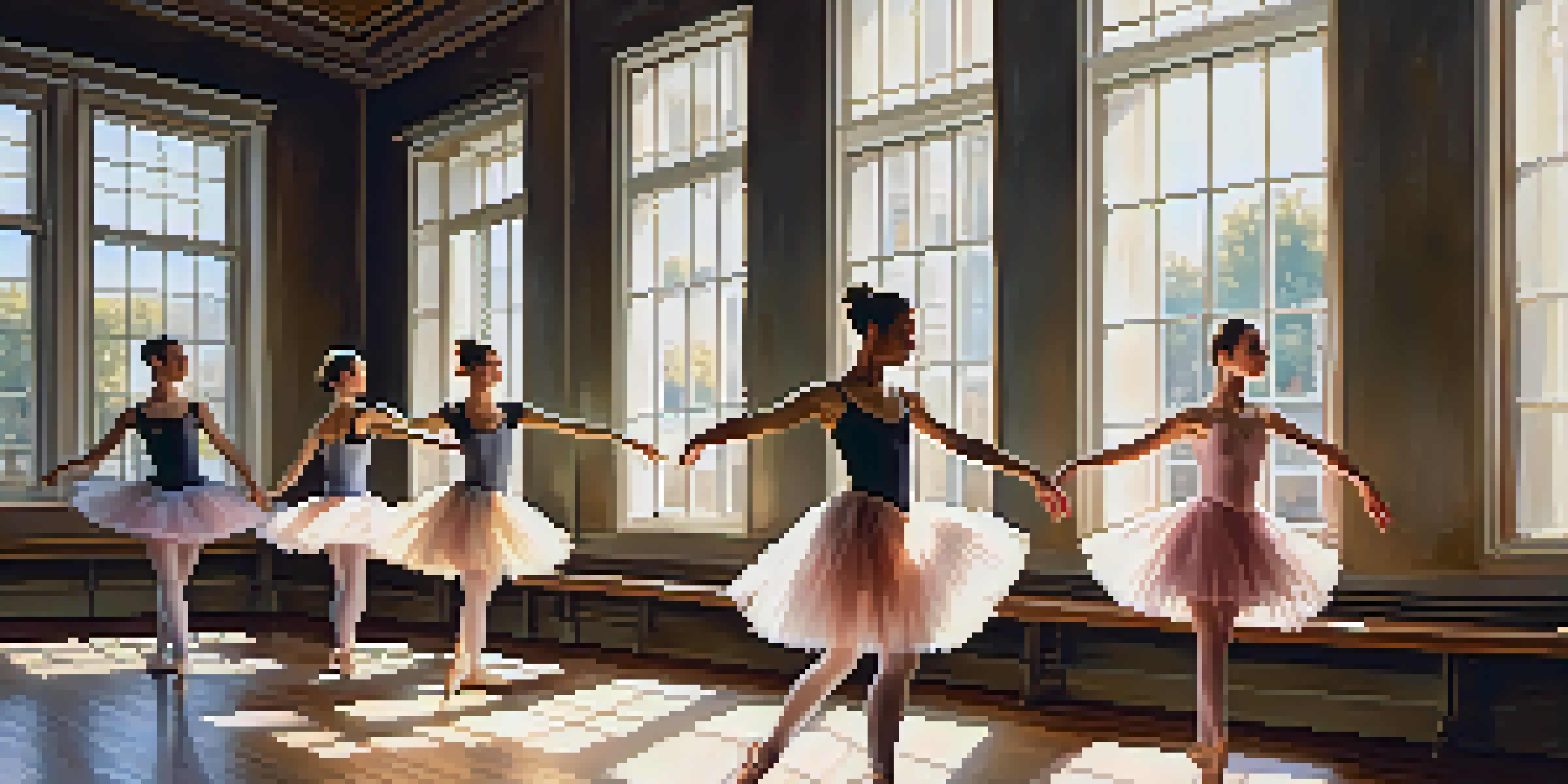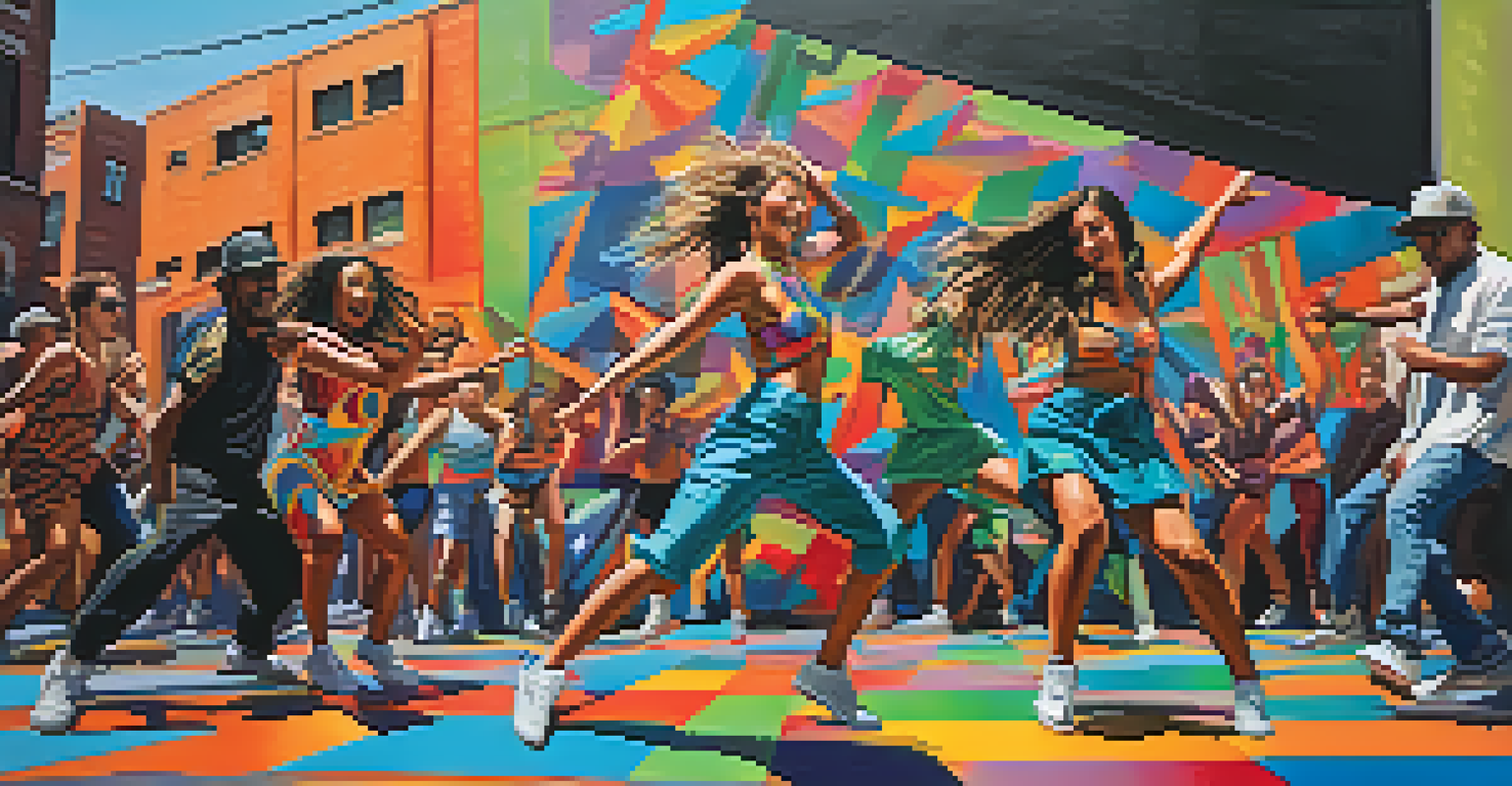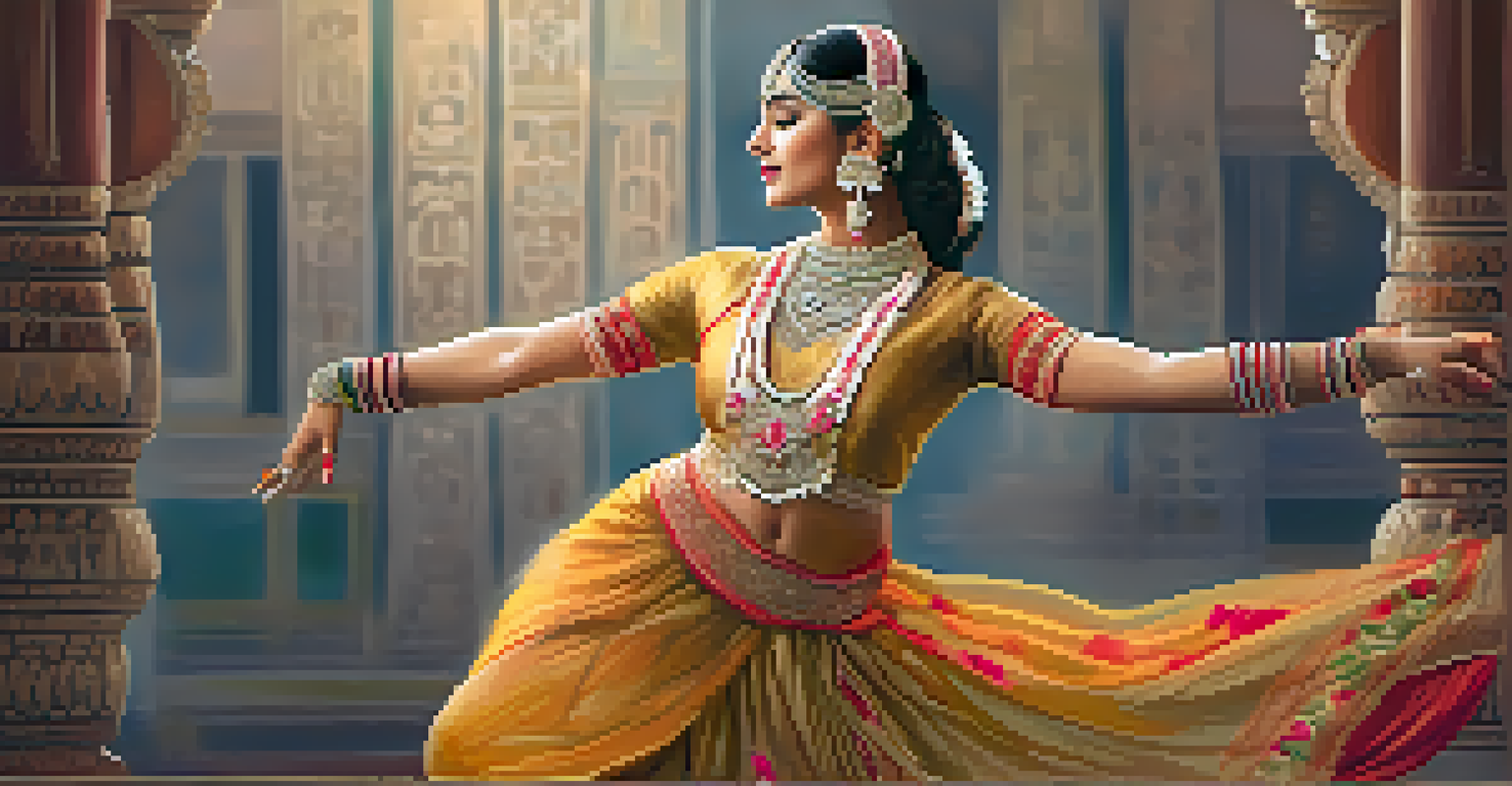The Art of Motion: How Painting Captures Dance Dynamics

Understanding the Connection Between Dance and Painting
At first glance, dance and painting may seem worlds apart, but they share a profound connection. Both art forms express emotion and movement, relying on the body to convey their stories. Just as a dancer uses their body to create dynamic shapes, a painter uses brushstrokes to capture that very essence on canvas.
Dance is the hidden language of the soul.
The intersection of these disciplines is where the magic happens. Artists often draw inspiration from the fluidity of dance, using it as a subject to explore movement and rhythm in their work. This connection allows viewers to experience the energy of a dance performance through the static medium of painting.
Consider how a dancer's pose can evoke emotion; similarly, a well-executed painting can transport its audience to a lively performance. By understanding this connection, we can appreciate how painters immortalize the grace and vigor of dance.
Capturing Movement: Techniques Used by Artists
Artists employ a variety of techniques to convey movement effectively in their paintings. Techniques such as blurred lines, exaggerated forms, and dynamic compositions create a sense of motion. For instance, the use of diagonal lines can suggest direction and speed, mirroring the swift movements of a dancer.

Another common technique is the depiction of multiple frames of motion within a single canvas. This method, reminiscent of early motion picture frames, allows the viewer to perceive the flow of movement, almost as if they are watching a dance unfold before their eyes. It's fascinating how a single image can narrate a sequence of actions.
Dance and Painting: A Shared Emotion
Both dance and painting express deep emotions and movement, inviting audiences to experience the energy of performance through visual art.
Furthermore, color plays a vital role in capturing the energy of dance. Bright, vibrant hues can evoke feelings of joy and excitement, while softer tones might suggest grace and elegance. By skillfully blending these elements, artists create a visual rhythm that resonates with the audience.
Famous Paintings That Exemplify Dance Dynamics
Throughout art history, many famous paintings have illustrated the dynamics of dance. One notable example is Edgar Degas’s 'The Dance Class,' which portrays dancers in various stages of movement, capturing both their grace and the energy of the rehearsal. Degas’s unique perspective emphasizes the beauty of the human form in motion.
Art is the most beautiful of all lies.
Another striking illustration is Henri Matisse’s 'The Dance,' where the vibrant colors and flowing lines vividly express the joy of movement. The circular arrangement of figures creates a sense of unity and rhythm, as if the dancers are caught in an endless loop of celebration. Matisse’s work invites viewers to feel the exhilarating pulse of dance.
These paintings not only depict movement but also evoke emotions that resonate with anyone who has experienced the art of dance. By studying these works, we can gain insight into how artists interpret and immortalize the transient beauty of dance.
The Role of Emotion in Dance and Painting
Emotion is at the heart of both dance and painting, serving as a powerful catalyst for expression. Dancers convey feelings through their movements, often telling stories of joy, sorrow, or passion. Similarly, artists use colors, lines, and shapes to evoke emotions in their audience, creating a connection that transcends words.
When a dancer performs, they invite the viewer into a shared emotional experience. This is mirrored in painting, where the viewer's interpretation of a piece can vary widely based on their own feelings and experiences. The interplay between the artist's intention and the viewer's perception is what makes both art forms so compelling.
Techniques to Capture Movement
Artists use techniques like blurred lines and dynamic compositions to effectively convey the sense of movement found in dance.
For instance, a painting that captures a dramatic dance can evoke feelings of intensity and excitement, while a serene ballet scene might inspire calmness and tranquility. This emotional dialogue between art and audience is what makes both dance and painting profoundly impactful.
Exploring Different Styles of Dance in Painting
Dance is a diverse art form with many styles, each offering unique opportunities for artistic expression. From ballet's graceful movements to the energetic beats of hip-hop, painters can explore these various styles to convey different feelings and narratives. This variety enriches the artistic landscape.
For example, a painter might capture the elegance of ballet through soft lines and delicate colors, while a depiction of a street dance could feature bold strokes and vibrant palettes to reflect its energy. By choosing a specific style, artists can communicate the essence of the dance and its cultural significance.
In this way, painting serves as a bridge between different dance forms and audiences, allowing for a deeper understanding and appreciation of each style's unique characteristics. This exploration can also inspire dancers to see their art through a different lens, enhancing their own performances.
The Impact of Cultural Context on Dance Paintings
Cultural context plays a significant role in how dance is represented in painting. Different cultures have unique dance traditions, each with its own stories and meanings. Artists often draw from their cultural backgrounds to depict these dances, infusing their work with deeper significance.
For example, traditional African dance might be illustrated with vibrant colors and rhythmic patterns, reflecting the communal spirit and celebration inherent in the performances. In contrast, a painting capturing classical Indian dance may focus on intricate details and symbolism, showcasing the rich history and spiritual connections of the art form.
Cultural Context Shapes Dance Art
Understanding cultural context enriches the appreciation of dance in painting, highlighting unique traditions and their significance.
By understanding the cultural context behind a dance painting, viewers can appreciate the layers of meaning that enrich the artwork. This awareness fosters a greater appreciation for the diversity of dance and its representation across different artistic mediums.
The Future of Dance in the World of Painting
As we look to the future, the intersection of dance and painting continues to evolve. Contemporary artists are experimenting with new techniques and mediums, incorporating technology and multimedia elements to enhance their depictions of dance. This innovation opens exciting avenues for artistic exploration.
For instance, some artists are using video projections or digital art to create dynamic installations that capture the essence of dance in real-time. By blending traditional painting with modern technology, they invite audiences to engage with their work in novel ways, creating immersive experiences.

Ultimately, the future of dance in painting lies in the artist's ability to adapt and innovate while staying true to the core emotions that dance evokes. As these two art forms continue to inspire one another, they will undoubtedly create new opportunities for expression and connection in the art world.